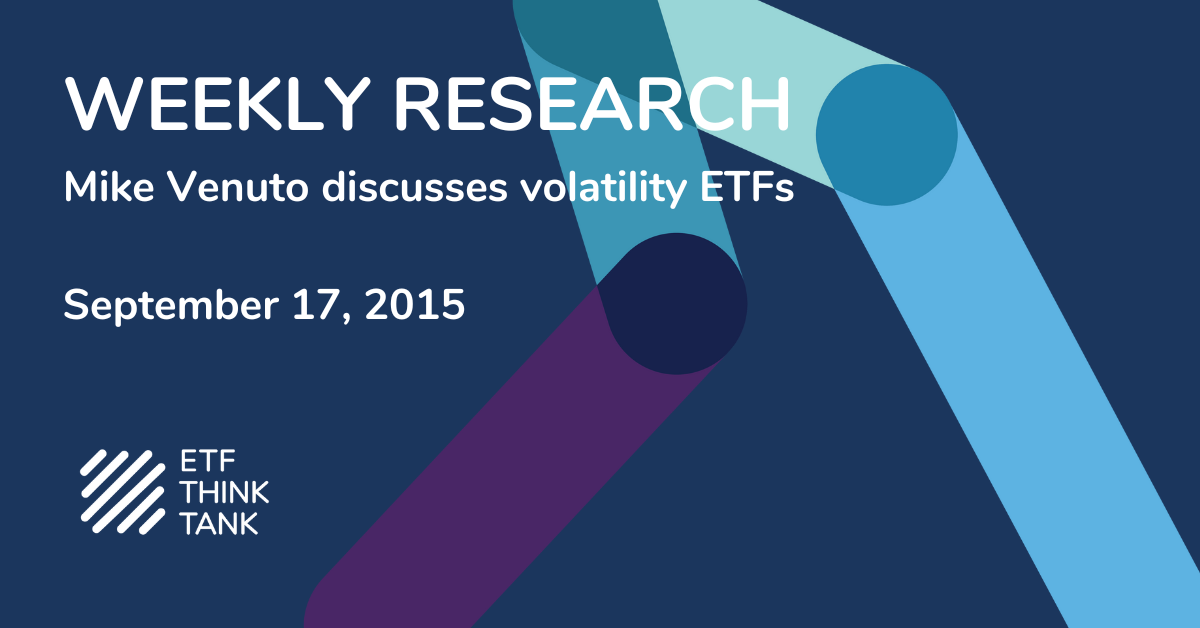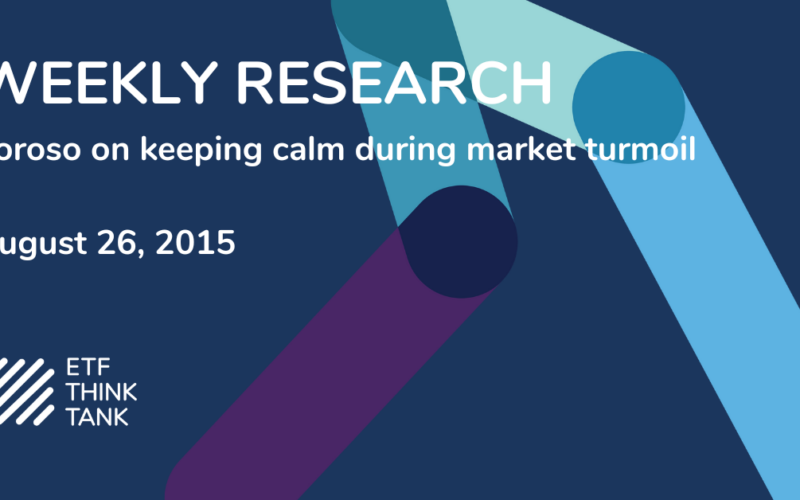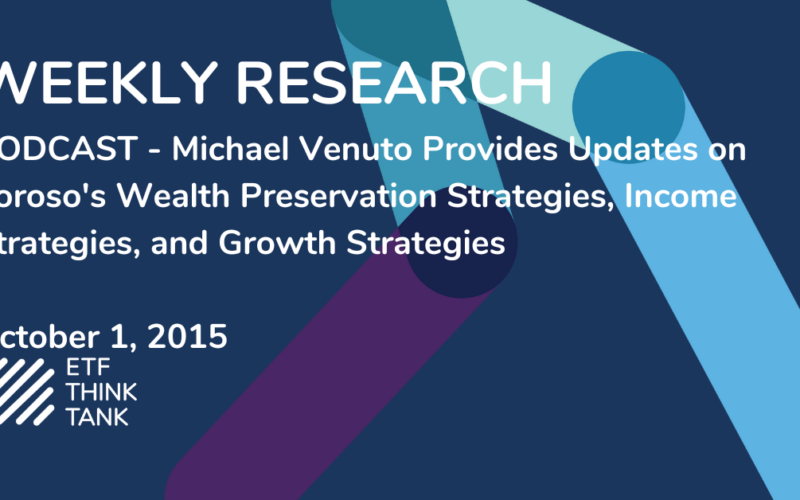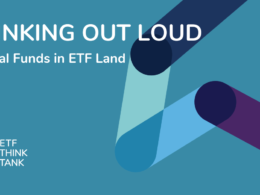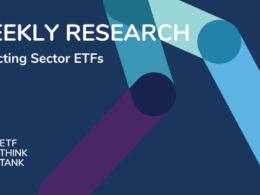This article is part of a regular series of thought leadership pieces from some of the more influential ETF strategists in the money management industry. Today’s article is by Mike Venuto, co-founder and chief investment officer of New York-based Toroso Investments.
Over the past few years, there has been a lot of discussion about volatility as an asset class. The recent turmoil in the market has reignited this debate.
In my opinion, volatility is not an asset class; rather, it’s a market factor that all investors are inherently long. Factors are idiosyncratic risk that traditional index investors inadvertently accept. Assets are tangible; they can grow and compound value.
Volatility is a behavioral result or return characteristic, and usually a bad one. Unless an investor explicitly limits volatility, they are long this factor. The advent of VIX exchanged-traded products (ETPs) was intended to provide investors the ability to mitigate the exposure to this factor.
The unintended consequence of these innovations was to create an opportunity for astute investors to profit from others’ desire to purchase volatility insurance.
What Volatility Really Is
Before delving into the intricacies of these ETPs, let’s clearly define the volatility factor. Realized volatility is simply a measure of standard deviation or investment performance outside of historical norms.
Since the market trends upward, most spikes in volatility usually correspond with negative economic events. Additionally, realized volatility erodes the positive effects of compounding returns.
This is best illustrated by Jeremy Siegel’s volatility paradox, which notes that returns are not geometrically offsetting. A loss of 10 percent in value requires a gain of 11 percent to go back to the original value. Volatility exponentially amplifies the breakeven requirements; a loss of 25 percent needs a 33 percent positive return to reset. Clearly mitigating this factor can have a positive effect on portfolio performance.
Historically, investors have attempted to limit volatility through diversification and asset allocation. Over long market cycles, this has worked, but in times of extreme stress—like 2008, or most recently, during August of this year—correlation of investments increases and the negative impact of volatility trumps the benefits of diversification.
The Need For Short-Term Tools
Investors with shorter time horizons need tools that implicitly mitigate the volatility factor; hence, the advent of volatility ETPs.
Most volatility ETPs seek exposure to the VIX index. The VIX index is a measure of implied volatility, which calculates the anticipated future standard deviation of the S&P 500 based on options prices. The VIX index is unique in that it does not compound, and always mean-reverts.
Unlike an asset, it cannot go to zero, and it cannot go to infinity. Historically, the realized standard deviation of the S&P 500 has been about 16 percent. Over the past 20 years, the average value of the VIX has been about 18, indicating an anticipated volatility or implied volatility of 18 percent. It is common that implied volatility is higher than realized, and this spread is translated into the cost of purchasing insurance on realized volatility.
Most ETPs that offer exposure to the VIX do so using futures. Essentially the underlying indexes combine long and/or short allocations of at least two VIX futures contracts.
You’re Not Buying Spot VIX
The process is complicated, but the most important thing for investors to understand is that investing in VIX futures will not result in returns that correspond identically to the VIX spot price.
This phenomenon is best illustrated by the first VIX futures-based ETN. The iPath S&P 500 VIX ST Futures ETN (VXX | B-62) launched in January 2009, at a time when spot VIX was relatively high, around 44. Today spot VIX is about 45 percent lower, but VXX is 99 percent lower. It is safe to say that VXX is not a buy-and-hold investment. This is due in large part to the cost of maintaining the exposure or insurance.
Since the launch of VXX in 2009, I have been fascinated by volatility ETPs. A key component of my investment philosophy is the acknowledgment that problems and inefficiencies create opportunities. This is an aspect shared by well-known investment managers in the ETP industry.
When Inverse Is Not Shorting
Greg King, currently CEO of the newly created REX ETFs, was both one of the architects of VXX and the creator of the vehicle, which captured the opportunity created by its inefficiency.
In late 2010, King, via VelocityShares, launched the VelocityShares Daily Inverse VIX ST ETN (XIV), which represents the inverse of the VIX Futures index tracked by VXX. It is extremely important for investors to understand that XIV is not short the VIX; it is short the cost of using futures to gain exposure to the VIX.
In other words, XIV collects and compounds the cost or premium others are willing to pay for insurance. That said, when volatility spikes, the cost structure or futures curve inverts, and XIV loses significant value quickly and violently.
The metaphor of picking up pennies in front of a steamroller accurately describes investing in XIV, but instead of pennies, investors collect dollars. I believe harvesting those dollars and consistently rebalancing exposure to XIV is one way to avoid being crushed.
A less popular way to express this trade or metaphor is to pick up quarters in front of a go-kart with the VelocityShares Daily Inverse VIX MT ETN (ZIV). ZIV investors can still get hurt, but not likely crushed, and the insurance premium collected is much smaller.
ZIV tracks the inverse of the midterm VIX futures index. It collects the cost of maintaining exposure to VIX futures by using the three- to seven-months’ futures. This part of the curve is less expensive and less reactive to moves in the VIX. Since inception in 2010, ZIV is up about 180 percent.
The Volatility ETP Universe
Today there are close to $5 billion allocated to ETPs that invest in VIX futures. There are about equal amounts dedicated to products that are long VIX futures as there are to the inverse products. There is also about $1 billion in a new suite of products that dynamically move from equity exposures to long or short VIX futures.
| ETPs | Assets $M | # of ETFs | # of ETNs |
| Long VIX Futures | $1,176,613.90 | 3 | 4 |
| Leveraged Long VIX Futures | $730,168.10 | 1 | 2 |
| Short VIX Futures | $1,992,688.50 | 1 | 4 |
| Equities + L/S VIX Futures | $1,057,104.10 | 4 | 3 |
| Total: | $4,956,574.60 | 9 | 13 |
Source: ETF.com as of Sept. 11, 2015
It should be self-evident that current VIX futures-based ETPs are insufficient tools to mitigate the realized volatility factor in a portfolio unless an investor has impeccable and consistent timing.
That said, innovative new products are launched every year. Perhaps one of the most interesting launches in this space was this year’sAccuShares Spot CBOE VIX Up Shares (VXUP) and AccuShares Spot CBOE VIX Down Shares (VXDN).
These ETFs seek exposure to spot VIX, which is the holy grail of volatility-factor reduction. Unfortunately, this is not easily achieved, and the structure of these ETFs appears quite convoluted at first glance.
They own cash instead of futures. Their value is maintained through distributions. There are equal amounts of VXUP and VXDN shares: Once a month, a distribution is made from one to the other that corresponds to the relative percent change in the VIX. This distribution is intended to keep the ETFs trading close to their statednet asset value (NAV).
Circuit Breakers Built In
Theoretically, the insurance premium inherent in VIX futures implies that there should always be more demand for VXUP than VXDN; therefore, VXUP should normally trade at a premium.
AccuShares was acutely aware of this possibility, and built circuit breakers—or triggers—into the structure that force a series of special distributions if either fund trades at significant premium or discount to NAV for more than three consecutive days.
Around Aug. 17, this structure was tested when the VIX spiked more than 200 percent. To my surprise, VXUP was trading at about a 35 percent discount to NAV at this time of extreme fear.
On Aug. 24, the special distribution process successfully brought the trading price back in line with NAV. Only time will tell if investors embrace this concept now that these ETFs have passed the first test.
So, if you are investing in the stock market, you are idiosyncratically long volatility.
There are many new and innovative ETPs to help mitigate that factor, but the intricacies and execution of these products requires vast knowledge of their structure and pricing.
When investing, I prefer to embrace the volatility factor, if properly compensated and hedged. After all, Warren Buffett didn’t become rich by buying insurance; instead, his success came from prudently selling insurance. It might be time for ordinary investors to benefit from selling insurance as well.
At the time of this writing, Toroso had positions in XIV, ZIV and VXUP. Toroso is affiliated with Global X Management Company. Toroso is a New York-based investment advisor focused on researching ETFs and other exchange-traded products, and designing asset allocation strategies, using ETFs that seek to perform well in various economic climates while emphasizing future objectives over past correlations. For more information about Toroso, call 646-465-5930, visit www.torosoinv.com or emailinfo@torosoinv.com. For a list of relevant disclosures, please clickhere.






